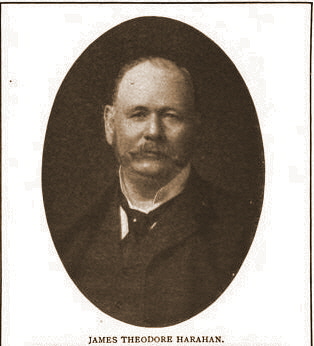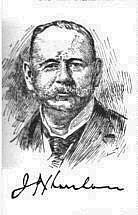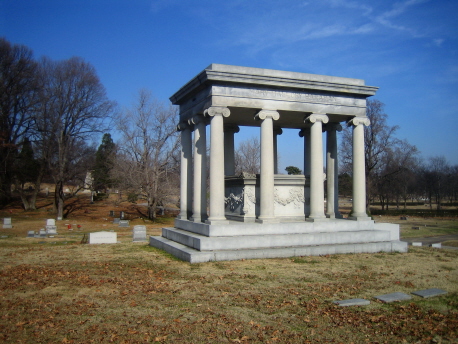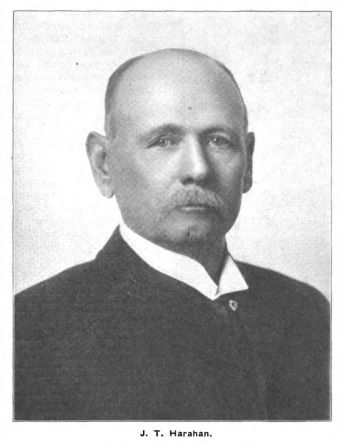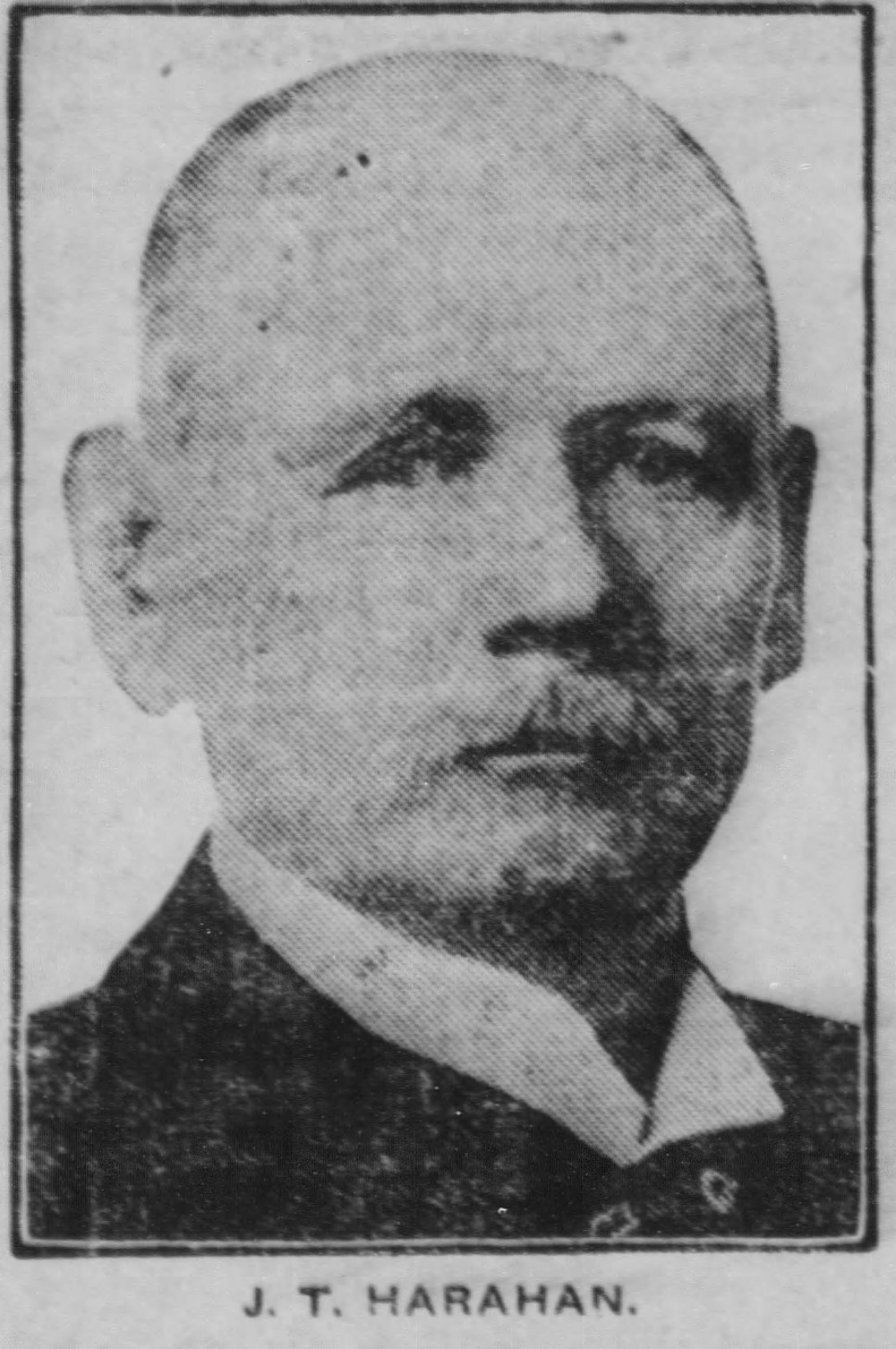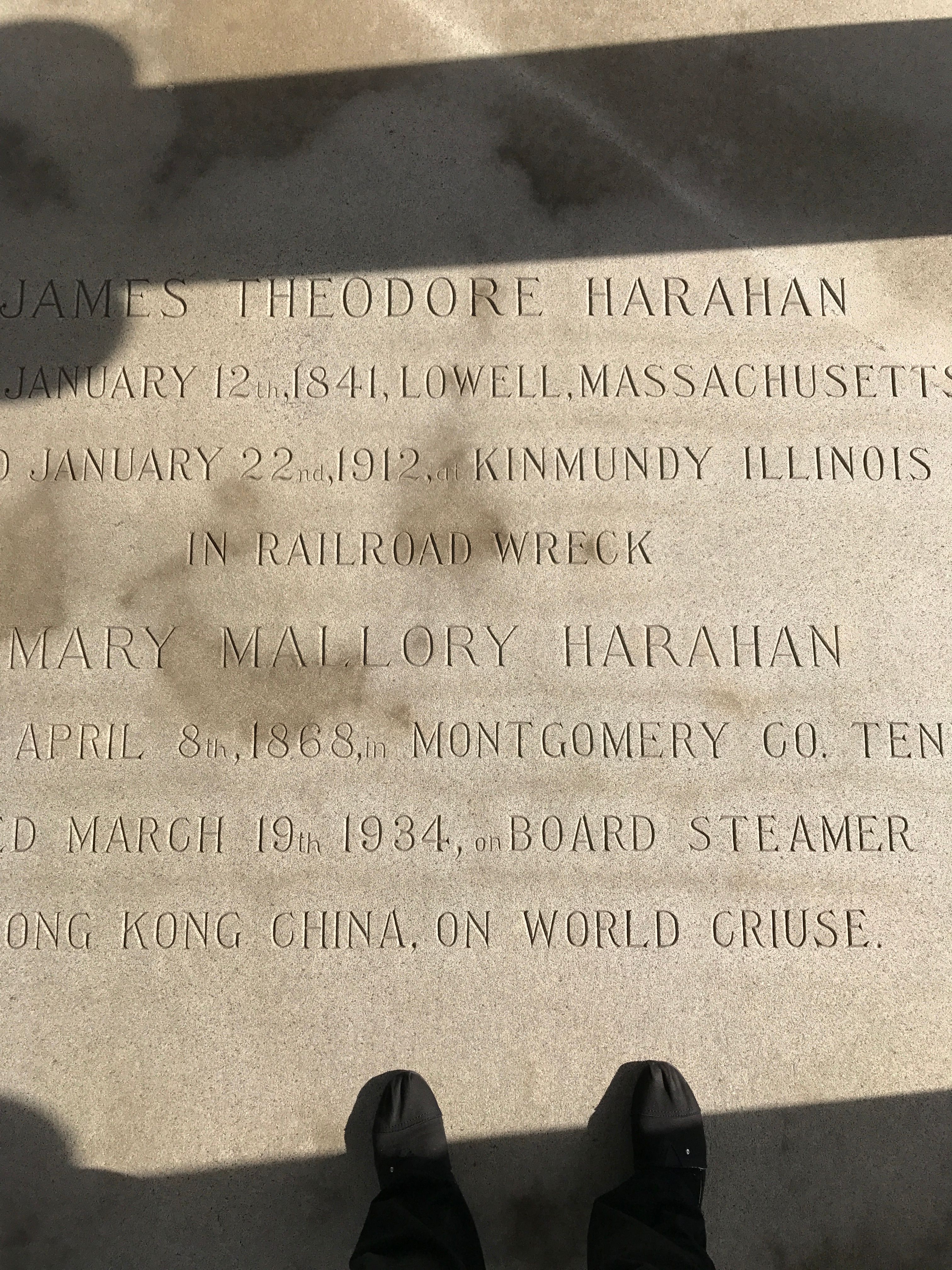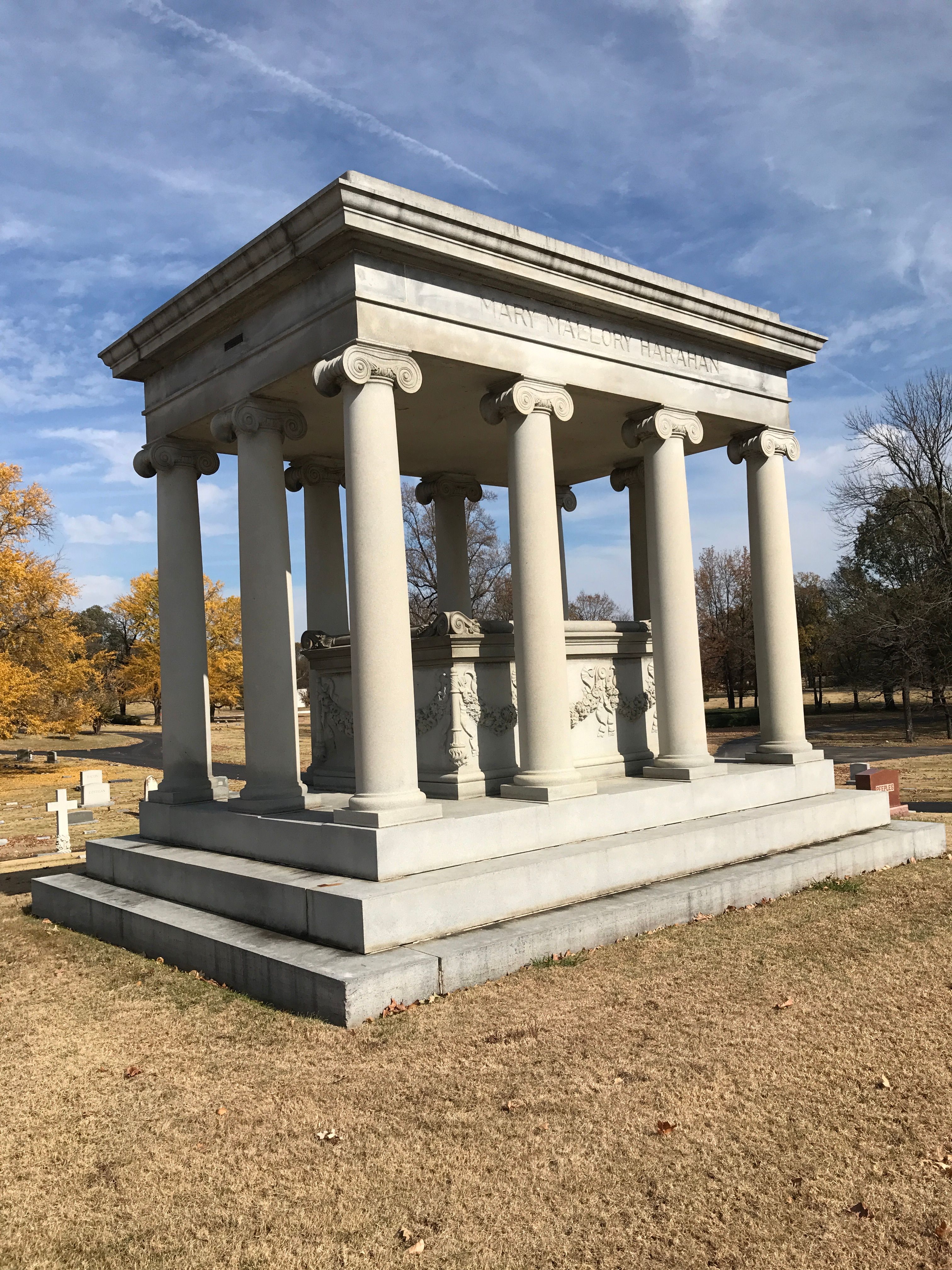James Theodore Harahan was born in Lowell, MA, on January 21, 1841, the son of Patrick and Rose (McCurn/McKeon) Harahan. Harahan served as a captain in the Union Army during the American Civil War. Captain Harahan married Mary Kehoe of New Orleans, Louisiana in 1866. Four children were born of this marriage including his son, William Johnson Harahan. He began his railroad career with the United States military railroad system during the Civil War. In 1866 he began working for the Louisville and Nashville Railroad and in 1888 was named Superintendent of the L&N's Memphis Division. He advanced to the position of General Manager of the L&N and later held the same position with the C&O Railroad.
He joined the Illinois Central in 1890 as second vice president and general manager of the Louisville, New Orleans and Texas Railroad, later to become the Yazoo & Mississippi Valley. He oversaw the construction of a large yard just outside of New Orleans, LA, in a community named Harahan by the railroad in his honor.
In 1899, Harahan married Mary N. Mallory, the daughter of Captain William Barton Mallory, a long time friend and prominent Memphian. After the wedding at the Mallory residence in Memphis, the newlyweds left on a special train to Mexico, where they planned to stay for six to eight weeks, before returning to Chicago where they were to reside.
During most of his career with the Illinois Central, Harahan worked under President Stuyvesant Fish. In 1906, Harahan aligned himself with Edward H. Harriman and in a heated election replaced Fish as the president of the railroad and served in that office until his mandatory retirement at the age of 70 on January 11, 1911.
If not for a fateful train wreck early January 22, 1912, Harahan would probably have been just a footnote in Memphis history. Harahan and officials of the Rock Island Railroad were traveling in Rock Island business car 1902 which was attached to the rear of Illinois Central train number 25, the "New Orleans Express." Harahan had recently been named president of the Memphis Bridge and Terminal Company, which had been incorporated to build a railroad bridge across the Mississippi River at Memphis. The Rock Island had bought a share in the company just a few week earlier on January 3rd and the group was en route to Memphis to discuss the project. Number 25 was stopped at Kinmundy, Illinois for water when it was struck in the rear by train #3, the "Panama Limited." The locomotive hit the wooden Rock Island business car and ended splintering two thirds of the length of the car before coming to a stop.
Killed were Harahan, Frank O. Melcher, second vice president of the Rock Island, Judge Edward B. Pierce, general solicitor of the Rock Island and Major Eldridge E. Wright, vice president of the Memphis Bridge and Terminal Company. Coincidentally, Train # 25 was being pulled by locomotive 1212 which was previously numbered 382, the engine in which Casey Jones met his fate over ten years earlier.
As a result James T. Harahan's death in the wreck, the bridge was posthumously named in his honor.
James Theodore Harahan was born in Lowell, MA, on January 21, 1841, the son of Patrick and Rose (McCurn/McKeon) Harahan. Harahan served as a captain in the Union Army during the American Civil War. Captain Harahan married Mary Kehoe of New Orleans, Louisiana in 1866. Four children were born of this marriage including his son, William Johnson Harahan. He began his railroad career with the United States military railroad system during the Civil War. In 1866 he began working for the Louisville and Nashville Railroad and in 1888 was named Superintendent of the L&N's Memphis Division. He advanced to the position of General Manager of the L&N and later held the same position with the C&O Railroad.
He joined the Illinois Central in 1890 as second vice president and general manager of the Louisville, New Orleans and Texas Railroad, later to become the Yazoo & Mississippi Valley. He oversaw the construction of a large yard just outside of New Orleans, LA, in a community named Harahan by the railroad in his honor.
In 1899, Harahan married Mary N. Mallory, the daughter of Captain William Barton Mallory, a long time friend and prominent Memphian. After the wedding at the Mallory residence in Memphis, the newlyweds left on a special train to Mexico, where they planned to stay for six to eight weeks, before returning to Chicago where they were to reside.
During most of his career with the Illinois Central, Harahan worked under President Stuyvesant Fish. In 1906, Harahan aligned himself with Edward H. Harriman and in a heated election replaced Fish as the president of the railroad and served in that office until his mandatory retirement at the age of 70 on January 11, 1911.
If not for a fateful train wreck early January 22, 1912, Harahan would probably have been just a footnote in Memphis history. Harahan and officials of the Rock Island Railroad were traveling in Rock Island business car 1902 which was attached to the rear of Illinois Central train number 25, the "New Orleans Express." Harahan had recently been named president of the Memphis Bridge and Terminal Company, which had been incorporated to build a railroad bridge across the Mississippi River at Memphis. The Rock Island had bought a share in the company just a few week earlier on January 3rd and the group was en route to Memphis to discuss the project. Number 25 was stopped at Kinmundy, Illinois for water when it was struck in the rear by train #3, the "Panama Limited." The locomotive hit the wooden Rock Island business car and ended splintering two thirds of the length of the car before coming to a stop.
Killed were Harahan, Frank O. Melcher, second vice president of the Rock Island, Judge Edward B. Pierce, general solicitor of the Rock Island and Major Eldridge E. Wright, vice president of the Memphis Bridge and Terminal Company. Coincidentally, Train # 25 was being pulled by locomotive 1212 which was previously numbered 382, the engine in which Casey Jones met his fate over ten years earlier.
As a result James T. Harahan's death in the wreck, the bridge was posthumously named in his honor.
Family Members
Sponsored by Ancestry
Advertisement
Advertisement















